Best in Show: The Buzziest Pavilions, Parties, and Palazzos During the 2022 Venice Biennale Opening Week
The 59th edition is a thoughtful exploration of human connection to the body, nature, and what lies beyond the visible. Here, a dispatch from opening week

Early last week, across the shimmering water of the Venetian canals, boats ferried throngs of artists, curators, collectors, dealers, writers and seasoned art aficionados from around the globe for the much-awaited vernissage of the 59th Venice Biennale. For a fairly small city—and an unconventional one given Venice’s uniquely sunken nature—the return of the world’s oldest and most-lauded biennial rose to the occasion with a week bringing brimming with exhibitions, gatherings, performances, dinners, and plenty of Aperol Spritz.
The city’s historic palazzi, narrow alleys, vaporetti, and restaurants were filled with the familiar faces of the international cultural scene who attempted impossible itineraries of packing everything in.
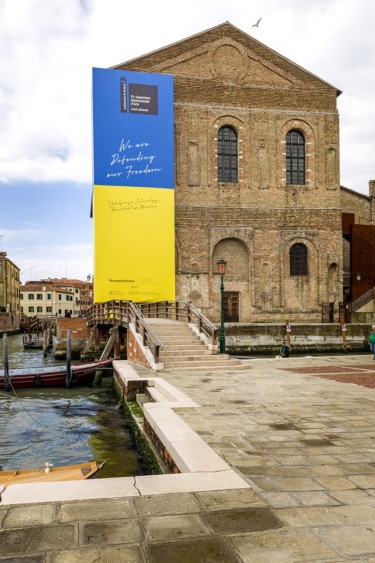
The crown jewel of the program is the main biennial—this year curated by the New York-based Italian curator Cecilia Alemani with the title “The Milk of Dreams”—at the Giardini and the Arsenale where also tens of national pavilions haul their mini solo or group exhibitions. Art, however, spills from the borders of the two main locales into the city of canals with numerous mainly solo exhibitions inside centuries old palaces where the ornate interiors provide unique backdrops for contemporary art’s cutting edge lexicons.
The biennale is a grand affair, famous for its star-making and market-boosting turns—with a dedication to present the underrepresented. This year, a vast majority of the 218 artists from 58 countries in the presentation, which Alemani has explained as “a transhistoric exhibition” back in February, are women, with an unprecedented number of artists of color, as well as those who identify queer or nonbinary.
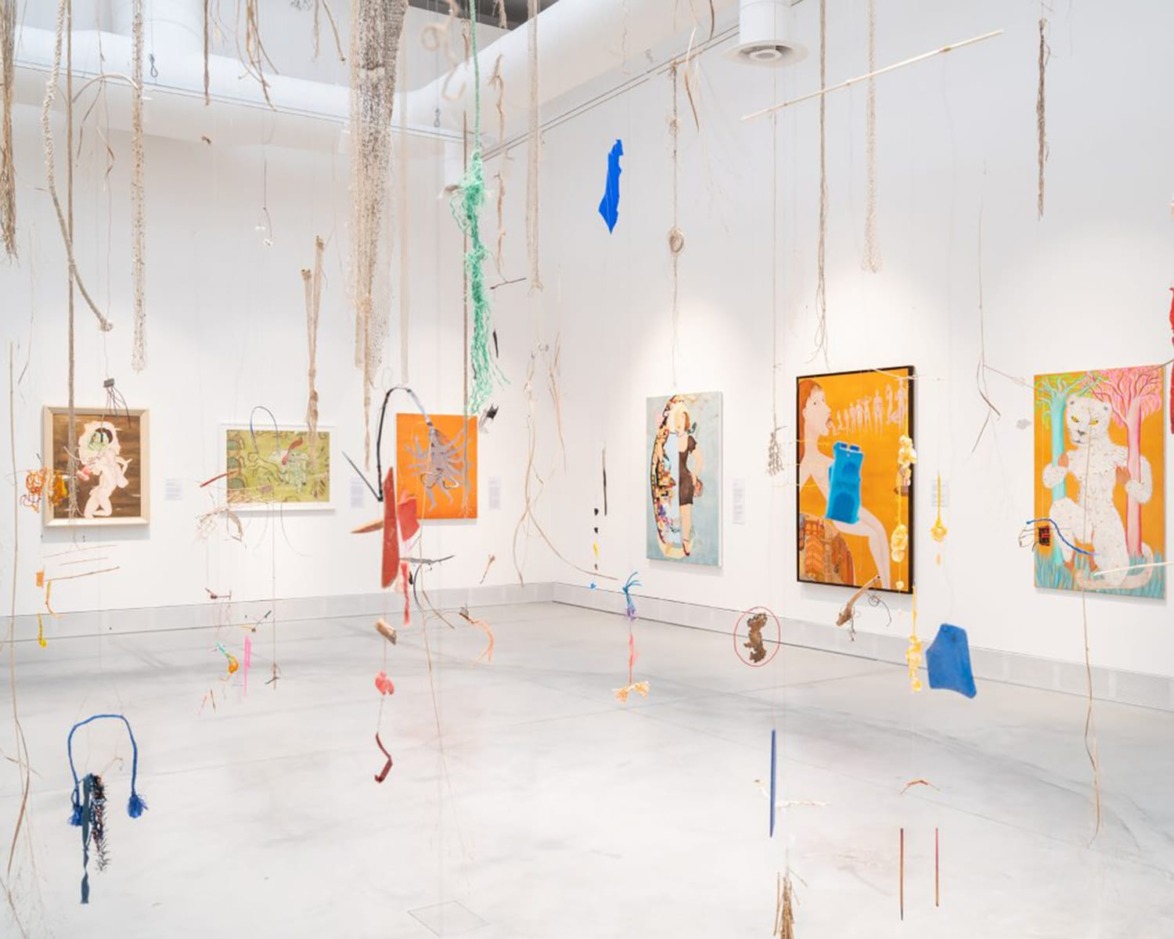
The show takes its title from the Surrealist Mexican-British artist Leonara Carrington’s drawings and children’s book, and fittingly, Surrealism and its assumption of boundless anarchist imagination are celebrated across over thousand artworks on sight. Cecilia Vicuña, who won the Lifetime Achievement Award in the biennial’s prestigious Golden Lions as the first Latin American artist to claim the title, delivers a dreamlike contemplation on political turmoil with her subliminal pastel-hued paintings about the poetry in survival, particularly through the experience of her nation Chile’s 1973’s military coup. New York-based artist Felipe Baeza’s statement on bodily transcendence and migration bursts from his mixed media ink and embroidery collages and additionally makes its way into the biennial’s promotional art which appears on boats meandering the islands.
Baeza and Vicuña are also among six biennial artists, along with Giulia Cenci, Precious Okoyomon, Alexandra Pirici, and Aki Sasamoto, whose art appears in Illy’s Art Collection series, which includes limited edition espresso cups decorated with a selection of artists from the show in every iteration. This year’s 30th anniversary edition kicked off the vernissage with a brunch at the Giardini Reali in Piazza San Marco, attended by Alemani who also selected the artist for the edition, as well as artists Marc Quinn and Joseph Kosuth and the biennial’s director Roberto Cicutto, all with espresso cups in hand. The caffein-fueled celebration unveiled a botanical installation that showcases every past series in a serpentine display.

Later in the evening, the gothic atmosphere of Chiesa di San Lorenzo provided a fittingly haunting backdrop for Studio Drift’s nocturnal drone performance. The Amsterdam-based new media art duo collaborated with digital art organization Aorist to craft their first indoor drone project which depicted an encounter between a swarm of fish and their potential predators under the watchful gaze of a mesmerized audience. The flickers of hovering amphibians maneuvered around the 9th century monastery’s dramatic angel-adorned columned altar in after-hours with music by Dutch DJ Don Diablo.
Buzworthy pavilions included the two winners of this year’s Golden Lion—Simone Leigh and Sonia Boyce—the first Black women artists to present respectively the United States and the United Kingdom. Leigh’s physical transformation of the U.S. pavilion’s facade into an African hut continues inside with her exploration of the Black female body in the artist’s now-signature semi-abstracted approach to the human silhouette. Boyce occupies the U.K. pavilion with an immersive installation of hallucinatory wallpapers, geometric gold-colored sculptures, and films that run footages of four British women singers of color improvising songs.
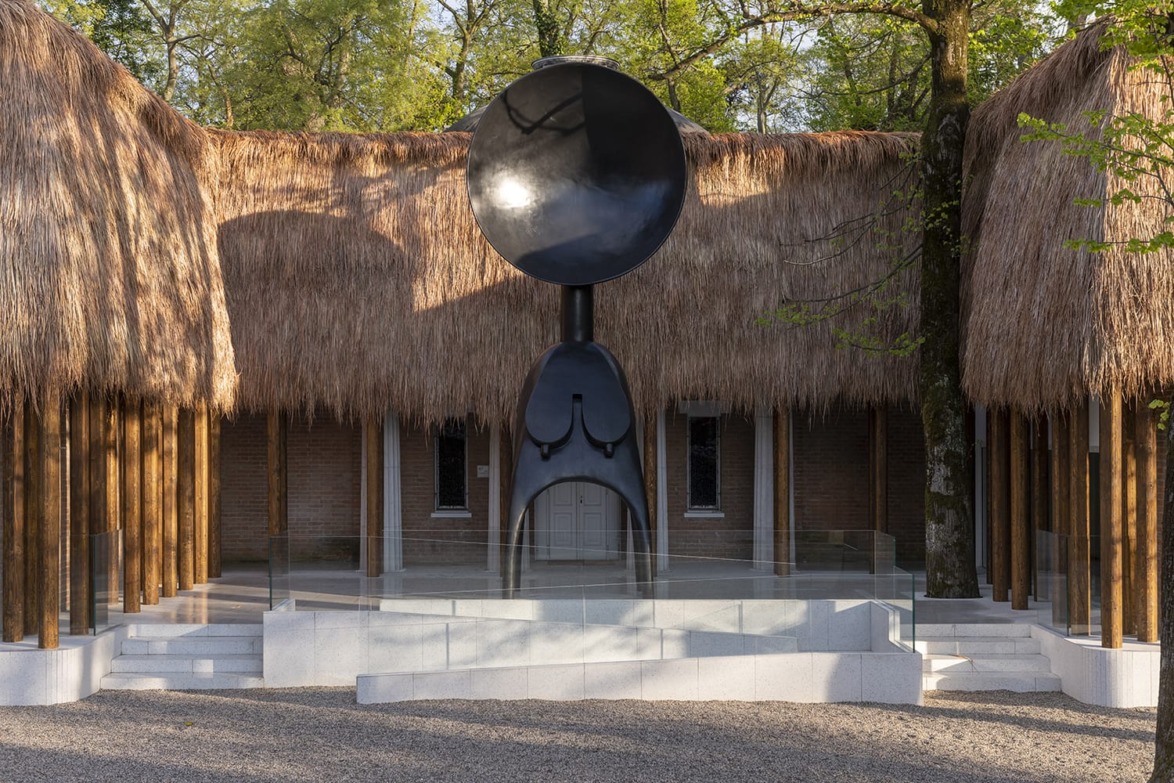
Breaking another glass ceiling, the Polish pavilion becomes the biennial’s first platform to give solo representation to a Roma artist, and installs Małgorzata Mirga-Tas’s massive textiles sewn with details from the everyday Roma experience between joy and struggle. Humor is not compromised in the Brazilian pavilion which lets visitors in through a massive human ear. Jonathas de Andrade’s whimsical juxtaposition of inflatable or moving sculptures, video, prints, and photography culls inspiration from various Brazilian expressions that metaphorically includes different parts of the human body, rendering these sayings in literal forms and larger-than-life scales.
Among the Arsenale’s pavilions, the Turkish pavilion challenges the typical the-bigger-the-better norm with Istanbul-based artist Füsun Onur’s intricate minuscule sculptures of cats, mice, and furniture, formed as a fable of the realities imposed by the human intervention into the nature. A kin refusal of restrained thinking prevails the Mexican pavilion’s group show, Until the Songs Spring, in which artists like Marina Castillo Deball and Fernando Palma Rodríguez challenge the colonial thinking and its invasion of local rituals, beliefs, and self-expressions with a dimly-lit theatrical setting.


For those eager for a marathon across the bridges and through occasional tourist huddles, venturing out of the two main sites leads to collateral shows peppered throughout the city. Fondazione Giorgio Cini hosts a suite of new painting by Kehinde Wiley who pushes his seminal fallen warrior-esque paintings of everyday Black youth to mammoth scales. Paralleling western art’s symbolic figure with the reality of violence towards the Black body, the presidential painter transfers his bright colors and lush patterns to the historic venue’s glorious atmosphere. The pouring rain did not slow down the show’s celebration at Palais Pisani Moretta on Thursday night, the crowd celebrating with Wiley included actress Tilda Swinton, musician Chance the Rapper and artist Moses Sumney.
The materialistically-rich yet narratively-introspective sculptures and collages of Louis Nevelson occupies Procuratie Venecchie, fresh from a renovation project helmed by David Chipperfield Architects. Coinciding with the sixtieth anniversary of Nevelson’s representation of the U.S. pavilion, the show’s more than sixty works manifest the artists’s architectural eye in sculpture and ability to inject narrative into the color black within the historic 16th century building. Steps away from the show, a party celebrating Nevelson’s legacy at Caffé Florian was attended by the artist’s granddaughter Maria Nevelson, as well as Pace Gallery artists Yto Barrada, Raqib Shaw, and Elmgreen & Dragset, as well as Independent founder Elizabeth Dee who took seats at the historic cafe’s flamboyant corners.
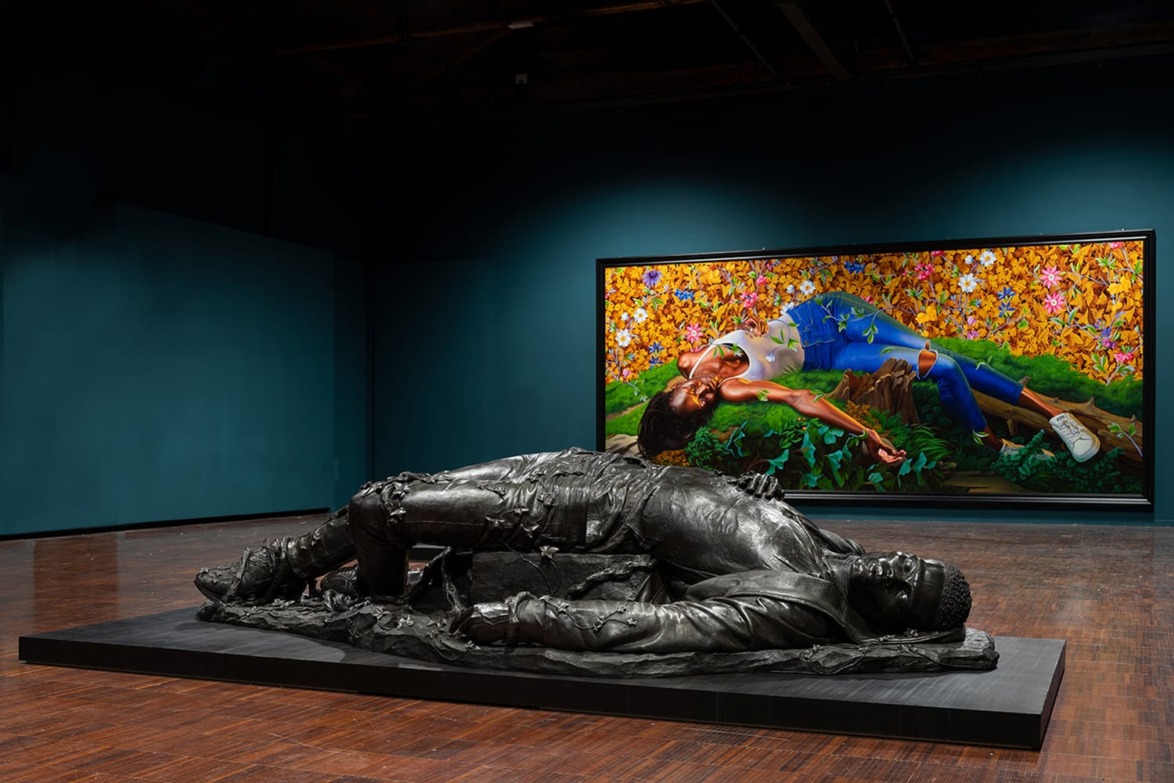
Ha Chong-Hyun’s exhibition at Palazetto Tito features the Korean Dansaekhwa master’s serene forms on hemp cloth, created within the last six decades, forming an unlikely harmony with their surrounding as well as each other. From the colorful geometry of his White Paper on Urban Planning series to his career-spanning Conjunction works, the show takes visitors through a journey on the potentials of colors beyond the visible, towards meditation. New York-based dealer Tina Kim who co-represents Chong-Hyun with Seoul’s Kukja Gallery, toasted to the artist with a dinner at Harry’s. Across the restaurant’s two floors, the guests included the exhibition’s curator Sunjung Kim, the biennial artist Mire Lee, and Object & Thing founder Abby Bangser.
The Ukrainian solidarity and defense against the Russian invasion is supported with an exhibition under the soaring ceilings of Scuola Grande della Misericordia. Kyiv’s influential art institution PinchukArtCentre presents This is Ukraine: Defending Freedom, organized by its director Björn Geldhof, to draw attention to the growing creative voice from Ukraine, with artists such as Nikita Kadan and Lesia Khomenko, as well as international names such as JR, Olafur Eliasson, and Marina Abramović. After the mayor of Venice Luigi Brugnaro, the Ukrainian ambassador in Italy Yaroslav Melnyk and Cicutto welcomed the attendees, which included J.R., curator Hans Ulrich Obrist, and PinchukArtCenter founder Victor Pinchuk, singers Svyatoslav Vakarchuk and Tina Karol performed songs in solidarity with their nation.
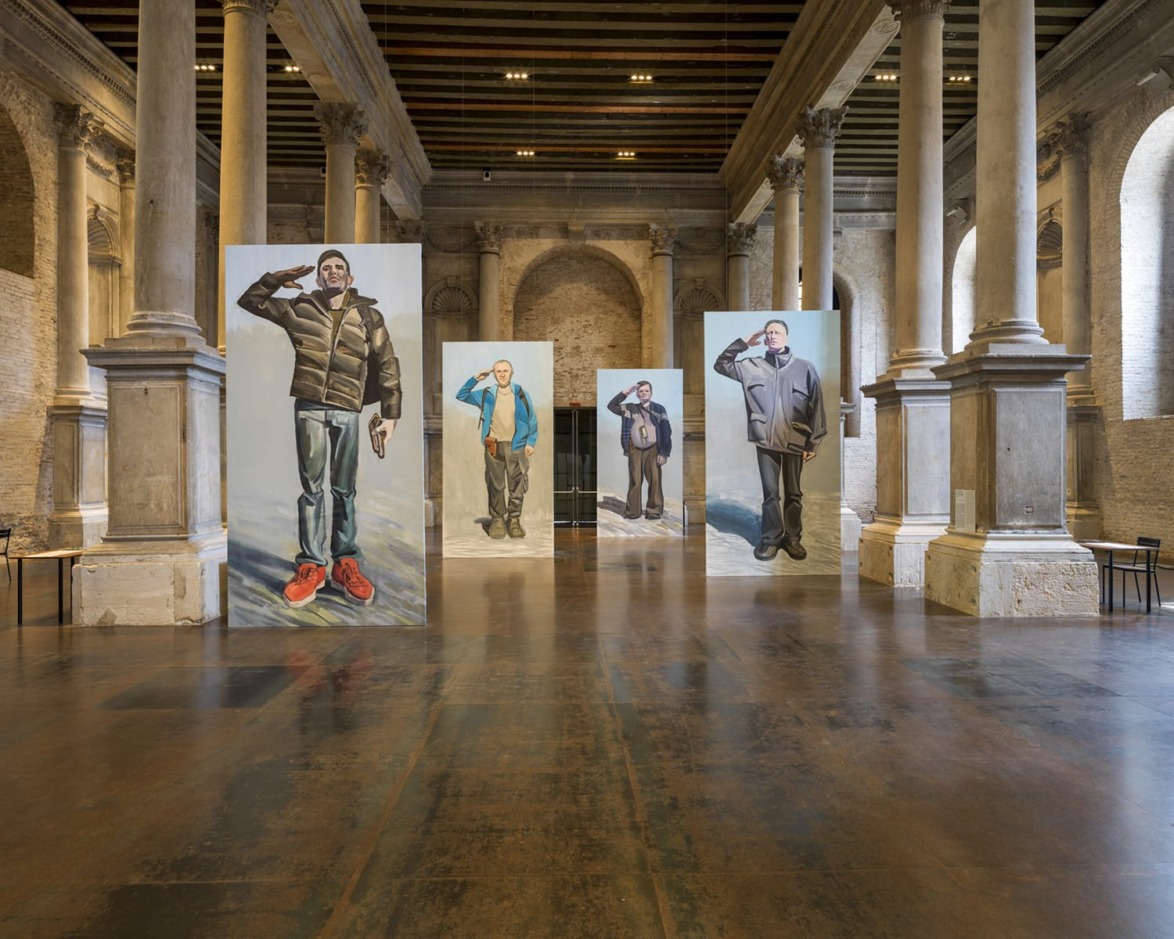
Visitors meandered though Venice’s winding streets connected by few steps-long bridges to reach Palazzo Ducale, which rises with its old worldly grandiosity and divinity on Piazzo San Marco. Inside awaits one of the most ambitious deliveries of the vast program, Anselm Keifer’s take-over of Sala dello Scrutinio which served for various purposes throughout the centuries, including housing elections or books. The glorious battle scenes painted by the 16th century masters are currently veiled by Keifer’s interpretations of the same subject, in the artist’s arresting dark hues, extremely towering scale, and absorbing use of paint and objects on panels.
La Biennale di Venezia runs through November 27, 2022.
